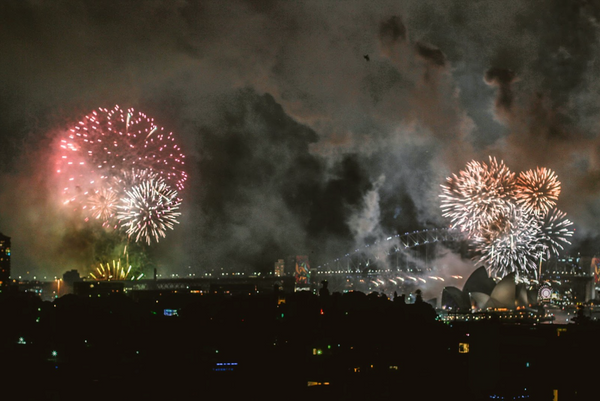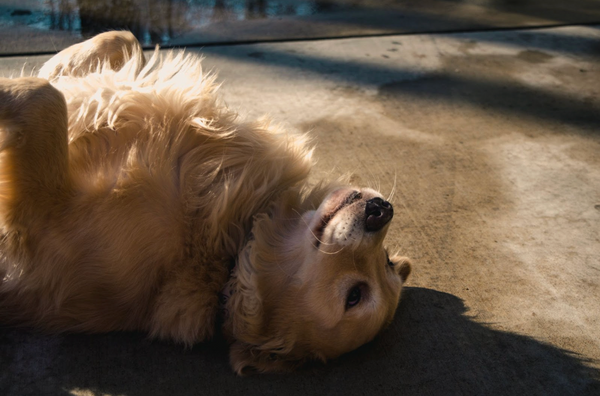How do I calm my dog during fireworks?

Easing Your Dog's Fireworks Anxiety
As dedicated dog parents, we'd move mountains to ensure our beloved furry companions are happy and secure. Sadly, when fireworks come into the picture, many dogs find themselves overwhelmed by anxiety and fear. The deafening explosions can quickly transform a joyous celebration into a nightmarish ordeal, both for our pets and ourselves.
But don't despair! Through the wonders of conditioned emotional response (CER) training, you can empower your dog to overcome most if not all of their fear of fireworks, allowing you both to better relish the festivities together. In this blog post, we'll delve into the steps to make the fireworks season a bit less daunting for your four-legged family member.

Photo by Belle Co.
Understanding Fireworks Anxiety
Fireworks often trigger dogs to react with trembling, excessive panting, barking, or even desperate attempts to escape from what they perceive as imminent danger. These responses are emotionally taxing for dogs and their human families. To address this issue, it's crucial to grasp the concept of CER training and how it can come to your dog's rescue.
Exploring Conditioned Emotional Response (CER) Training
CER training is a potent tool for reshaping your dog's emotional reaction to specific stimuli, particularly fireworks. Here's the 4 steps describing how you can put it into practice:
- Identify the Trigger: The initial step involves recognizing that fireworks are the primary trigger for your dog's anxiety. Understanding the source of the problem is naturally the key to solving it.
- Counterconditioning: The magic happens here. Associate the sound of fireworks with positive experiences. Engage in playtime, offer delectable treats, and cultivate a tranquil environment during a fireworks display.
- Gradual Exposure: Gradually introduce your dog to fireworks sounds, commencing with low-intensity versions such as recorded firework sounds. As your dog grows more comfortable, you can incrementally increase the intensity.
- Consistency and Repetition: The heart of CER training lies in unwavering consistency and periodic repetitions. Keep fostering positive associations with fireworks and revisit the training regularly - all year round.

Practical Tips for the Fireworks Season
- Create a Safe Haven: Establish a snug and familiar sanctuary where your dog can seek refuge during fireworks displays. This could be a area of their favourite room furnished with their most cherished toys and comforting blankets.
- Soothing Background Sounds: Play calming music or "white" noise in the background to help muffle the cacophony of fireworks.
- Consult with a Professional: If your dog's anxiety is severe, consider enlisting the expertise of a professional dog trainer or behaviorist. They can provide tailored guidance and support.
- Gradual Desensitization: Slowly acclimate your dog to recorded firework sounds, helping them become more accustomed to the noise. If you can somehow let your dog control the pace, it’ll be more efficient.
How scared is your dog? Take the TEST
In Conclusion
Aiding your dog in conquering their fireworks anxiety through conditioned emotional response training requires time and patience, but it's undoubtedly a worthwhile endeavor. By following these steps and cultivating a positive association with fireworks, you can ensure a less stressful and more enjoyable experience for both you and your cherished canine companion during firework celebrations.

Photo by Jonathan Meyer.
Remember, your dog looks up to you for comfort and guidance. With your help, they can learn to face the noise and lights of fireworks with confidence. So, let's embark on this journey together and help your furry friend conquer their fear of fireworks!




Leave a comment